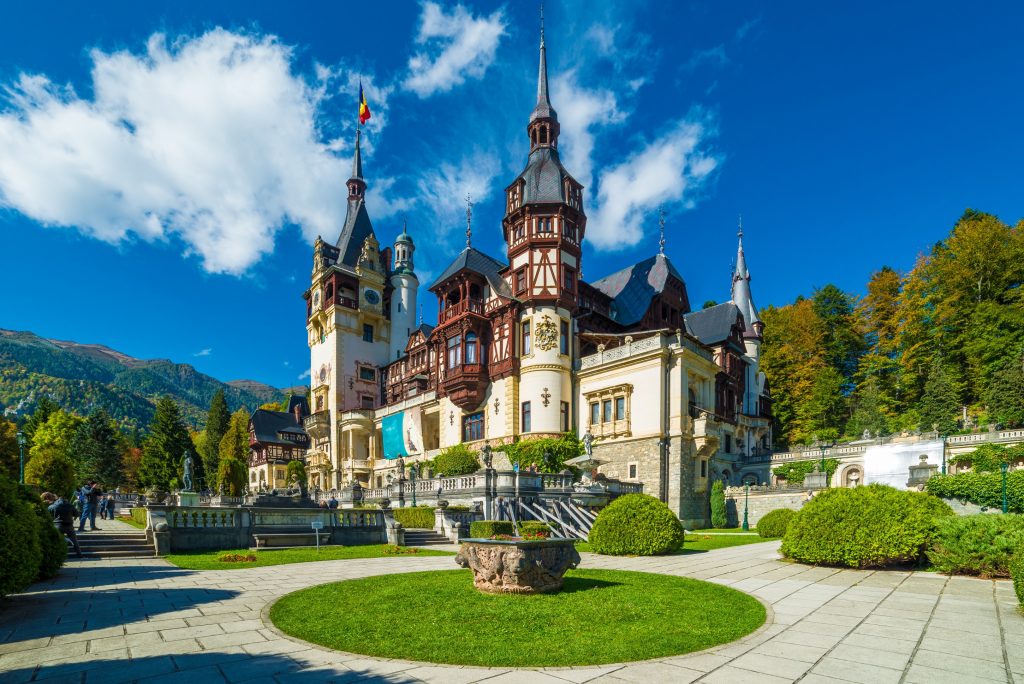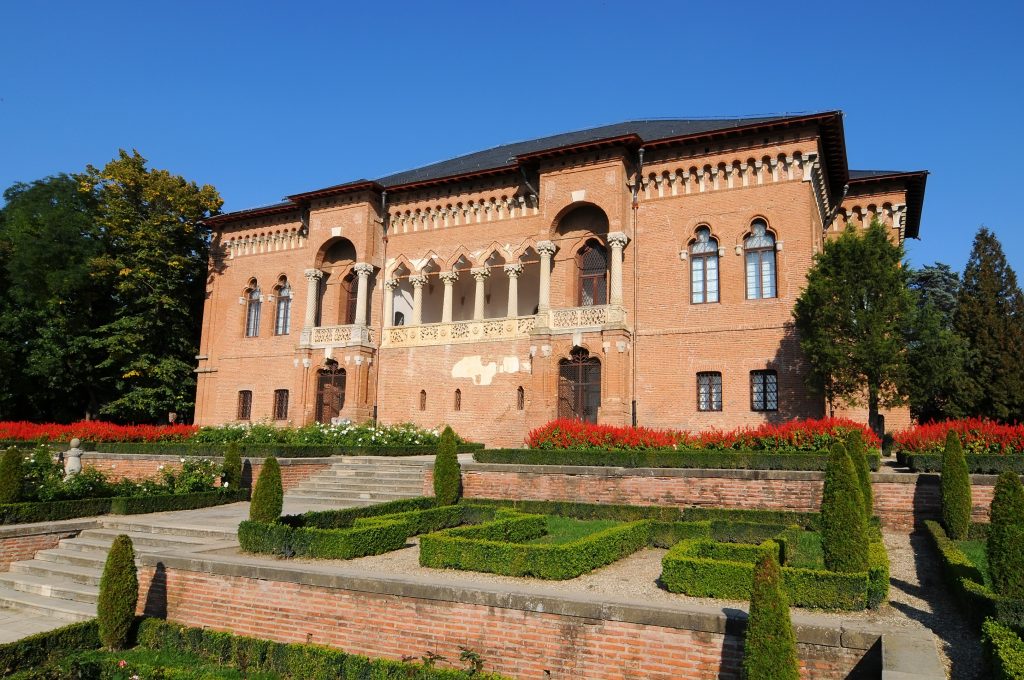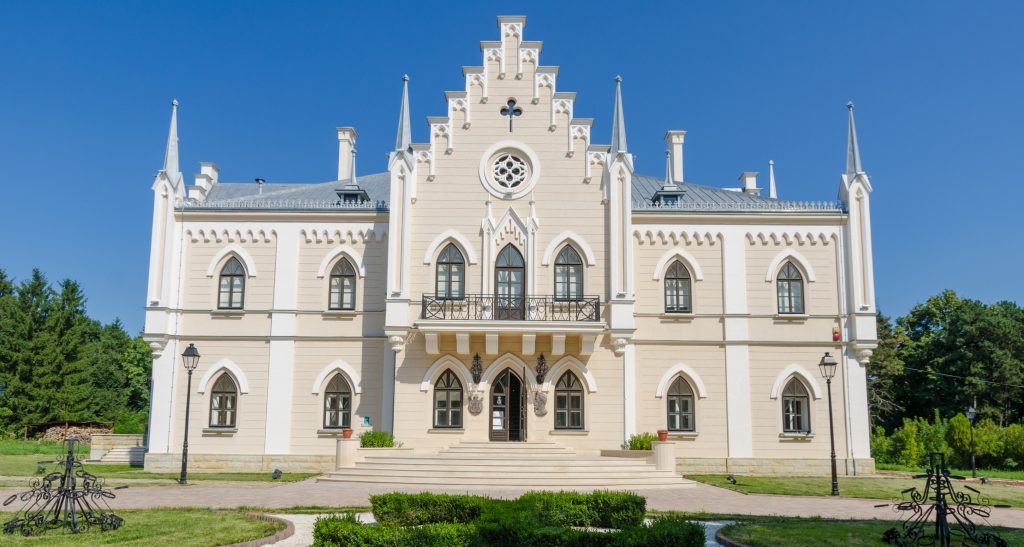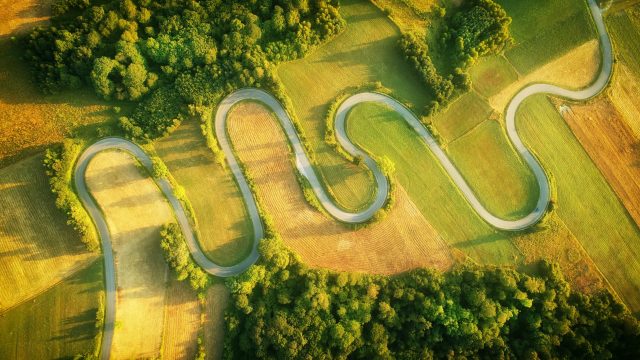Romania has a great natural beauty and a strong cultural heritage. It’s growing in popularity for travellers. It is the 7th most populated country in the EU, and its capital city is the 6th largest in the EU. Attractions include the Carpathian Mountains which dominate the centre of the country. There are 14 mountain ranges, reaching 2000m above sea level. Over 3,900 square meters of the country is under protection. This covers 13 national parks and 3 biosphere reserves.
Its appeal for many is its rich history and incredible architectural styles. Examples exist in medieval fortresses, castles and stunning churches. Before the late 1800s, the castles were forms of defence. Over time they have become grander, more imposing structures with luxurious interiors. We run through some of the most incredible castles in Romania that you won’t want to pass exploring.
 Peles Castle, Sinaia. Photo by: Balate Dorin/Adobe Stock
Peles Castle, Sinaia. Photo by: Balate Dorin/Adobe Stock
Peles Castle, Sinaia
Built between 1873 and 1914, this was a summer home and retreat for Romania’s longest-serving monarch, King Carol I. It has distinctive towers, and a fairy-tale structure. Unfortunately, the King died months after its completion. He was buried within the grounds.
With acres of green meadows attached, the castle is German Renaissance in style. Yet, it has hints of Italian Renaissance and German Baroque. More than 160 rooms make up the building, built from wood, stone, bricks and marble. The seven terraces are decorated with statues, carrara marble, and ornamental vases. It was the first in Europe to have electricity and central heating.
See the sculpted wood interior, the stained-glass windows showing German fairy-tales, and Murano crystal chandeliers. In the armouries, over 4,000 European and Oriental pieces from the 15th to 19th centuries are on display.
There are several buildings to discover, including the Guard Chambers, the Foisor Hunting House, and the Royal Stables.
 Bran Castle, Transylvania. Photo by: dobri71/Adobe Stock
Bran Castle, Transylvania. Photo by: dobri71/Adobe Stock
Bran Castle, Transylvania
This 13th-century castle is said to be the home of Bram Stoker’s Count Dracula. Sat on a 200ft rock, the imposing construct sure looks like a place you’d find something sinister lurking. The reality isn’t quite that extreme. The connection is Count Vlad Tepes, (Vlad the Impaler), said to be inspiration behind the name of Stoker’s Dracula. He was in prison here for two weeks, but Stoker was never known to visit the castle.
The castle was originally built to control commerce between Transylvania and Southern Romania. Romania’s former royal family resided here during the early 20th century. It was then that Queen Marie had it renovated. Her daughter, Princess Ileana had it turned into a hospital during World War II. It was seized by the communist regime in 1948 and the royal family expelled. Add this to the connection of Dracula, Bran Castle has become the most-visited museum in Romania.
It has 57 rooms and a secret passageway which leads to the watch tower. See the exhibitions of furniture, weapons and armour from the 14th to 19th centuries. In the tower that once served as a dungeon, catch the gothic chests that resemble coffins.
 Hunyard Castle, or Corvin Castle, Hunedoara. Photo by: emperorcosar/Adobe Stock
Hunyard Castle, or Corvin Castle, Hunedoara. Photo by: emperorcosar/Adobe Stock
Corvin Castle, Hunedoara
Also known as Corvinisti Castle or Hunyard Castle. The imposing tall towers dominate the landscape above the River Zlasti. Gain access across the wooden bridge, supported by stone pillars, over the river. Over the years, the castle has served as a stronghold as well as a princely home. It has 42 rooms, a courtyard, and a small dungeon. Vlad the Impaler spent 7 years in imprisonment here.
Construction began in the 14th century, incorporating Gothic and Renaissance architectural styles. It is the largest Gothic castle in Romania.
Although there isn’t much of the original furniture left, the rooms now host art from local artists. There are also giftshops from local crafters.
 Palace of Culture, Iaşi. Photo by: Balate Dorin/Adobe Stock
Palace of Culture, Iaşi. Photo by: Balate Dorin/Adobe Stock
The Palace of Culture, Iași
Built on the ruins of the 15th century medieval princely courts between 1906 and 1925, it was used as the Palace of Justice. This made it one of the last public institutions to be built in the Neo-Gothic style. Over time, the building has been restored and since 1955 it has been used as a museum. It hosts four in total; the Museum of Art, the Museum of Science, the Ethnographic Museum, and the Museum of History. It also hosts other exhibitions and events.
Listed on the National Register of Historic Monuments, the palace has 298 large impressive rooms.
The clock tower has an incredible clock face on each of its three exposed sides. The faces are decorated with stained glass depicting the 12 astrological signs. At night, the faces are illuminated.
 Mogoșoaia Palace, Mogoșoaia. Photo by: Titi Matei/Adobe Stock
Mogoșoaia Palace, Mogoșoaia. Photo by: Titi Matei/Adobe Stock
Mogoșoaia Palace, Mogoșoaia
Located 10km from Bucharest, this palace was built between 1968 and 1702. It has a Romanian Renaissance style, also known as Brâncovenesc style. The construction was ordered by Constantin Brâncoveanu. He was executed along with his family in Constantinople in 1714. The family’s wealth was confiscated, along with the palace, which was turned into an inn. Eventually, the property was returned to the family, the grandson of Constantin. The eventful history continued when it was devastated by the Ottomans. It was then bombed by German forces in 1916. It underwent reconstruction, only to be forcibly nationalised by the Communist regime.
Since 1957, it has been a museum. It has beautiful grounds and gardens to explore but the interiors are under renovation. The museum and art gallery inside are worth visiting.
 Cantacuzino Castle, Bușteni. Photo by: ticus/Adobe Stock
Cantacuzino Castle, Bușteni. Photo by: ticus/Adobe Stock
Cantacuzino Castle, Bușteni
Ordered by Prince George Grigore Cantacuzino, the architect Gregory Cerchez completed this castle in 1911. The estate covers over 3000 square meters.
Forced nationalisation in 1948 led to it becoming a preventorium for the Ministry of Internal Affairs; working with patients infected with tuberculosis but who were yet to have an active form of the disease.
During the communist regime, much of the original furniture was removed, and the decorative walls were painted over. It’s now undergone restoration, with stained glass windows, stucco marble, cantilevers, painted ceilings, and mosaics, providing decorative features. The castle also offers more activities for a range of visitors, such as airsoft, archery lessons, and a zipline.
 Ruginoasa Palace, Ruginoasa. Photo by: alexionas/Adobe Stock
Ruginoasa Palace, Ruginoasa. Photo by: alexionas/Adobe Stock
Ruginoasa Palace, Ruginoasa
Originally ordered in 1804, this is another palace with a bit of a dark side. Costache Sturdza renovated the building in 1847 after inheriting it. He ended up locking his wife inside to keep her from his mistress. However, the mistress killed his son before kidnapping his wife. He abandoned the property and it was bought and renovated by Alexandru Ioan Cuza to be used as a summer residence. Cuza was the first prince of the United Romanian countries. Following the abdication and death of the prince, the castle was inherited by Maria Moruzzi. When she died in 1921, the palace became a hospital.
It faced massive destruction during WW2 as it sat on the front. Restoration began in the 1980s and it now stands as the Museum Alexandru Ioan Cuza- organised as close to original plans as possible with original furniture or exact replicas. The most modern twist is a talking hologram of the prince.
Discovering the castles in Romania
Make sure you book your hire car in Romania to enable you to reach these architectural delights as easily as possible.
Have you visited one or more of these castles before? Share your experiences in the comments below!
Written by Jessica Juby.
Make sure you follow us on Twitter and Facebook for the latest travel tips and news. Remember to sign up to our newsletter below for the latest deals.
Subscribe to our newsletter
Want our blogs emailed direct to you? Sign up below to get updates featuring our blogs and car hire top tips. Receive the best deals on car hire straight to your inbox.





